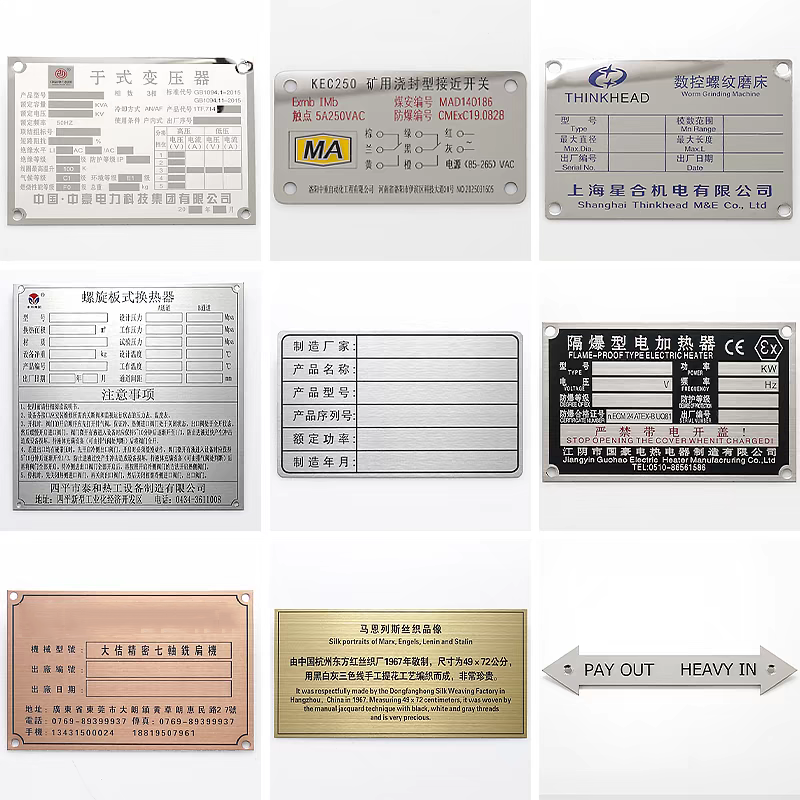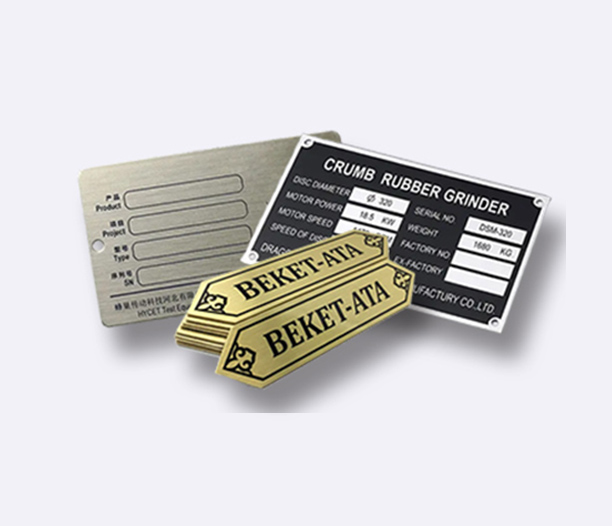Fire extinguishers are the first line of defense in many emergency situations, but their effectiveness hinges on one critical factor: visibility and information. This is where tags for fire extinguishers become non-negotiable. They are not just pieces of paper or plastic; they are vital communication tools that ensure safety, compliance, and readiness. A well-maintained tag system can mean the difference between a swiftly controlled incident and a catastrophic event.
This comprehensive guide will delve into the seven essential types of tags for fire extinguishers, explain their purpose, and answer the most common questions to ensure your safety equipment is always inspection-ready and effective.

Why Tags for Fire Extinguishers Are a Legal and Safety Imperative
Before we explore the specific types, it's crucial to understand the "why." Tags for fire extinguishers serve multiple indispensable functions:
Compliance with Regulations: Organizations like OSHA (Occupational Safety and Health Administration) and NFPA (National Fire Protection Association) have strict codes (e.g., NFPA 10) mandating the regular inspection, maintenance, and tagging of all fire extinguishers. Proper tags for fire extinguishers are your primary proof of compliance during an audit or inspection.
Instant Operational Guidance: In a high-stress fire emergency, people panic. Clear, illustrated tags provide immediate visual instructions on how to operate the specific extinguisher, saving precious seconds.
Maintenance History and Status: Tags act as a logbook, documenting the extinguisher's service history. They instantly communicate whether the unit is fully charged, recently inspected, or due for service.
Hazard Identification: Specific tags help identify the class of fire (A, B, C, D, or K) the extinguisher is designed to combat, preventing dangerous misuse on incompatible fire types.
Neglecting these tags is akin to having a safety tool with no instructions, no history, and no verification of its functionality—a significant liability.
The Inspection Tag: The Record Keeper
The most common type among tags for fire extinguishers is the inspection tag. This is typically a durable paper or plastic card attached to the extinguisher's ring-pull or handle.
Purpose: To provide a monthly verification that the extinguisher is in its designated place, appears operable, and has not been used or tampered with.
Key Information: It includes fields for the extinguisher's unique ID number, location, and a long log of monthly checkboxes initialed and dated by the assigned inspector. It proves that a visual check has been performed routinely as required by NFPA 10.
Appearance: Often a multi-year tag with columns for each month, allowing for a compact, long-term record.
The Maintenance/Service Tag: The Professional's Seal
After a thorough internal examination or any major repair, a certified technician will attach a maintenance or service tag. This is one of the most critical tags for fire extinguishers for liability and compliance.
Purpose: To document that a qualified professional has performed a detailed inspection, maintenance, or recharge on the unit.
Key Information: It includes the date of service, the type of service performed (e.g., "annual maintenance," "6-year hydrotest," "recharge"), the name and signature of the technician, and the company's information. NFPA requires these "hands-on" checks annually and at 6 and 12-year intervals.
Appearance: Often a distinct color or shape to differentiate it from the monthly inspection tag.
The Instruction Tag: The Emergency Guide
Mounted directly on the extinguisher itself, the instruction tag is a permanent label, but it is a fundamental part of the tagging ecosystem.
Purpose: To provide clear, step-by-step instructions on how to operate the extinguisher. It typically uses the PASS acronym (Pull, Aim, Squeeze, Sweep) along with pictorial diagrams.
Key Information: Operating instructions, a brief description of the types of fires it is designed to fight (e.g., "For Use on Class A, B, and C Fires"), and safety warnings.
Appearance: A laminated or printed metal tag affixed to the side of the cylinder, designed to be highly visible and easy to read.
The Classification Tag: Identifying the Hazard
This tag, often integrated with the instruction tag, is crucial for selecting the right tool for the job.
Purpose: To identify the class of fire the extinguishing agent is effective against. Using the wrong type of extinguisher can be ineffective or even dangerous (e.g., using water on an electrical fire).
Key Information: It features standardized lettering and pictorial symbols (e.g., a burning trash can for Class A, a flaming petrol drum for Class B, a burning electrical outlet for Class C).
Importance: This is a core component of employee training, ensuring individuals can quickly match the extinguisher to the fire hazard present in their area.

The NFPA 704 Diamond: The Hazard Rating Label
While not a tag attached to the extinguisher itself, the NFPA 704 diamond is a crucial informational tag that is placed on the door or wall near the extinguisher's location, especially in industrial and laboratory settings.
Purpose: To warn emergency responders and personnel of the specific health, flammability, instability, and other special hazards (e.g., water reactivity) of the materials stored in that area.
Key Information: The diamond is divided into four color-coded sections (blue for health, red for flammability, yellow for instability, white for special hazards) with a number rating from 0 (minimal hazard) to 4 (severe hazard).
Connection to Extinguishers: This information helps in selecting the most appropriate extinguisher and response strategy for the specific chemicals present.
The "Out-of-Service" Tag: Preventing False Security
An often-overlooked but vital member of the family of tags for fire extinguishers is the "Out-of-Service" tag.
Purpose: To clearly communicate that an extinguisher is not operational and must not be relied upon in an emergency. This is used when an extinguisher is removed for service, is found defective during a monthly check, or is being hydrostatically tested.
Key Information: It clearly states "OUT OF SERVICE" in large, bold letters. It should also include the date it was taken out of service, the reason, and who authorized its removal. A key protocol is that if an extinguisher is removed, a fully charged and tagged replacement must be provided for the area before the original is taken away.
The Electronic Tag: The Digital Evolution
Modern technology has introduced digital tags for fire extinguishers. These often involve a QR or barcode that can be scanned with a mobile device.
Purpose: To digitize the inspection and maintenance log, creating a centralized, cloud-based record that is easy to manage, audit, and analyze.
Key Information: Scanning the code can bring up the entire service history, next due date, inspection checklists, and technician notes. It can also send automated alerts when an inspection is overdue.
Benefits: Reduces paper waste, minimizes human error in record-keeping, and streamlines facility management for large portfolios of extinguishers.
Common Questions and Concerns About Tags for Fire Extinguishers
Q1: What happens if my fire extinguisher is missing its tag?
A: An extinguisher without a tag is considered non-compliant with OSHA and NFPA standards. It has no verified service history, so its operational status is unknown. It must be immediately taken out of service, inspected by a professional, and fitted with a new tag before being returned to its station.
Q2: Who is qualified to perform the monthly inspection and tag it?
A: OSHA and NFPA allow for monthly visual inspections to be conducted by a designated employee, owner, or occupant of the premises. They do not need to be a certified technician. However, any maintenance beyond a visual check (e.g., internal inspection, hydrotesting, recharging) must be performed by a licensed and certified fire protection professional.
Q3: Are there specific color requirements for tags?
A: While there is no universal federal color code, it is a widely adopted best practice to use different colors for different years. This allows for quick visual identification of the last service date from a distance. For example, many companies use:
2025: Purple
2024: Black
2023: Silver
Always check with your local Authority Having Jurisdiction (AHJ) for any specific color-coding requirements.
Q4: How do I know if my tags are compliant?
A: Compliant tags for fire extinguishers must, at a minimum, record:
The month and year of the most recent inspection/maintenance.
The name or initials of the person who performed the service.
The name of the company performing the maintenance (for professional service).
The type of service performed (monthly, annual, hydrotest).
Ensure your tags have ample space for multiple years of records.
Q5: Can I use a handwritten tag?
A: While handwritten entries on a pre-printed tag are perfectly acceptable and standard for monthly inspections, the tag itself should be a durable, pre-formatted material designed to withstand environmental conditions. A makeshift tag, like a piece of masking tape, is not compliant.
Tags for fire extinguishers are far more than bureaucratic paperwork. They are a integrated system of communication, accountability, and safety. They transform a simple metal cylinder into a trusted, verified, and effective emergency tool. By implementing and maintaining a rigorous tagging protocol, you protect your property, ensure regulatory compliance, and, most importantly, safeguard the lives of everyone in the building. Regularly audit your extinguishers, train your staff on what the tags mean, and always partner with a certified professional for maintenance. This proactive approach ensures your first line of fire defense is always ready for action.






